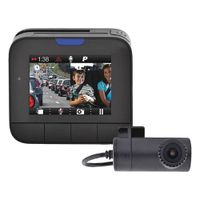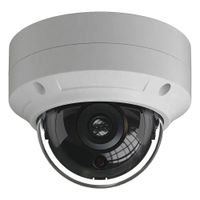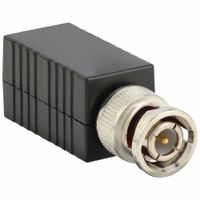Call +(254) 703 030 000 / 751 483 999 / 721 704 777
.....Read More
Frequently Asked Questions
What are the benefits of video surveillance cameras?
Video surveillance cameras offer numerous benefits across various sectors. Primarily, they enhance security by deterring criminal activities such as theft, vandalism, and trespassing. The presence of cameras can discourage potential offenders from committing crimes, knowing they are being watched. In the event of a crime, surveillance footage provides crucial evidence that can aid in investigations and lead to the apprehension of perpetrators.
In businesses, video surveillance helps in monitoring employee behavior, ensuring compliance with company policies, and improving productivity. It can also protect against false claims and liabilities by providing clear evidence in disputes or accidents. Retail environments benefit from reduced shoplifting and better inventory management through constant monitoring.
For homeowners, surveillance cameras offer peace of mind by allowing remote monitoring of their property, ensuring the safety of family members and possessions. They can also be integrated with smart home systems for enhanced functionality, such as motion detection alerts and real-time video feeds.
In public spaces, video surveillance contributes to overall public safety by monitoring high-traffic areas, assisting in crowd control, and managing emergencies more effectively. It supports law enforcement agencies in maintaining order and responding swiftly to incidents.
Moreover, advancements in technology have made video surveillance systems more affordable and accessible, with features like high-definition video, night vision, and cloud storage. These systems can be customized to meet specific needs, providing scalable solutions for different environments.
Overall, video surveillance cameras are a vital tool in crime prevention, safety enhancement, and operational efficiency, offering a sense of security and control to individuals, businesses, and communities.
How do video surveillance systems deter crime?
Video surveillance systems deter crime through several mechanisms. Firstly, they act as a visible deterrent. The presence of cameras can discourage potential criminals from committing illegal acts due to the increased risk of being caught. Knowing they are being watched, individuals are less likely to engage in criminal behavior.
Secondly, surveillance systems enhance the perception of security. When people feel that an area is monitored, they perceive it as safer, which can reduce the likelihood of crime. This is particularly effective in public spaces, businesses, and residential areas where the presence of cameras can reassure the community and deter criminal activity.
Thirdly, video surveillance aids in the identification and apprehension of criminals. Recorded footage can be used as evidence in investigations and prosecutions, increasing the likelihood of criminals being caught and punished. This potential consequence can deter individuals from committing crimes in the first place.
Additionally, surveillance systems can improve response times to incidents. Real-time monitoring allows for quick detection of suspicious activities, enabling law enforcement or security personnel to respond promptly, potentially preventing crimes from occurring or escalating.
Moreover, video surveillance can contribute to crime prevention strategies. By analyzing footage, patterns of criminal behavior can be identified, helping authorities to implement targeted measures to address specific issues. This strategic use of surveillance data can lead to more effective crime reduction efforts.
Finally, the integration of advanced technologies, such as facial recognition and motion detection, enhances the effectiveness of surveillance systems. These technologies can automatically alert authorities to potential threats, further deterring criminal activities by increasing the likelihood of detection and intervention.
What features should I look for in a video surveillance camera?
When selecting a video surveillance camera, consider the following features:
1. **Resolution**: Opt for high-definition (HD) cameras, preferably 1080p or higher, for clear and detailed images.
2. **Field of View**: Choose a camera with a wide-angle lens to cover more area. Pan, tilt, and zoom (PTZ) capabilities can enhance coverage.
3. **Night Vision**: Ensure the camera has infrared (IR) LEDs or low-light technology for clear images in darkness.
4. **Motion Detection**: Look for cameras with advanced motion detection to trigger alerts and reduce false alarms.
5. **Storage Options**: Consider cameras with cloud storage, local storage (SD card), or network video recorder (NVR) compatibility.
6. **Connectivity**: Wireless cameras offer flexibility, while wired ones provide stable connections. Ensure compatibility with your network.
7. **Weatherproofing**: For outdoor cameras, check for IP ratings to ensure they withstand weather conditions.
8. **Audio Features**: Two-way audio allows communication through the camera, useful for deterrence or interaction.
9. **Smart Integration**: Compatibility with smart home systems and voice assistants can enhance functionality.
10. **Power Source**: Decide between battery-powered, solar-powered, or wired cameras based on installation convenience.
11. **App and User Interface**: A user-friendly app for remote access and control is essential for monitoring and managing the camera.
12. **Privacy and Security**: Ensure the camera supports encryption and secure data transmission to protect your privacy.
13. **Installation and Mounting**: Consider ease of installation and whether the camera can be mounted in your desired location.
14. **Cost and Warranty**: Balance features with budget and check for warranties or customer support options.
These features will help you choose a camera that meets your surveillance needs effectively.
How do I choose the right video surveillance system for my needs?
To choose the right video surveillance system, start by assessing your specific needs. Determine the purpose: is it for home security, business monitoring, or public safety? Identify the areas you need to cover and the level of detail required, which will influence the type of cameras and their resolution.
Consider the environment: indoor or outdoor, and the lighting conditions. For low-light areas, opt for cameras with infrared or low-light capabilities. Decide between wired or wireless systems based on installation ease and reliability. Wired systems are generally more stable, while wireless offers flexibility.
Evaluate the type of cameras: dome, bullet, or PTZ (pan-tilt-zoom) based on coverage needs. Dome cameras are discreet, bullet cameras are visible deterrents, and PTZ cameras offer wide coverage with movement capabilities.
Resolution is crucial; higher resolution provides clearer images but requires more storage. Balance resolution with storage capacity and consider systems with efficient compression technologies like H.265.
Choose between local storage (DVR/NVR) and cloud storage. Local storage offers control and no recurring fees, while cloud storage provides remote access and data protection from physical damage.
Ensure the system supports remote access via mobile apps or web interfaces for real-time monitoring. Check for integration capabilities with other security systems or smart home devices for a comprehensive security solution.
Consider the system's scalability for future expansion. Evaluate the total cost, including installation, maintenance, and potential subscription fees for cloud services.
Finally, research brands and read reviews to ensure reliability and customer support. Opt for systems with warranties and robust customer service to address any technical issues.
What are the legal considerations for installing video surveillance cameras?
When installing video surveillance cameras, several legal considerations must be taken into account:
1. **Privacy Laws**: Ensure compliance with privacy laws, which vary by jurisdiction. Generally, cameras should not be installed in areas where individuals have a reasonable expectation of privacy, such as bathrooms or changing rooms.
2. **Notification and Consent**: In many regions, it is required to inform individuals that they are being recorded. This can be done through visible signage. In some cases, explicit consent may be necessary, especially in workplaces.
3. **Data Protection Regulations**: Adhere to data protection laws like the GDPR in the EU or CCPA in California. These laws dictate how video data should be collected, stored, and processed, emphasizing the need for data security and limited retention periods.
4. **Purpose Limitation**: Clearly define the purpose of surveillance, such as security or crime prevention, and ensure that the use of cameras is proportionate to that purpose.
5. **Access and Disclosure**: Limit access to recorded footage to authorized personnel only and establish clear protocols for disclosing footage to third parties, such as law enforcement.
6. **Audio Recording**: Be aware that audio recording often has stricter regulations than video. In many jurisdictions, recording audio without consent is illegal.
7. **Employment Laws**: If cameras are installed in workplaces, ensure compliance with employment laws and labor agreements, which may require consultation with employee representatives or unions.
8. **Public vs. Private Spaces**: Different rules apply to surveillance in public spaces versus private property. Ensure compliance with local laws governing each type of space.
9. **Legal Recourse**: Be prepared to address any legal challenges or complaints regarding the use of surveillance, including potential claims of invasion of privacy or misuse of data.
10. **Regular Review**: Regularly review and update surveillance policies to ensure ongoing compliance with evolving laws and technologies.
How do I install a video surveillance system?
1. **Plan Your System**: Determine the areas you want to monitor and the number of cameras needed. Consider indoor vs. outdoor cameras, wired vs. wireless, and features like night vision and motion detection.
2. **Choose the Right Equipment**: Select cameras that suit your needs. Purchase a DVR/NVR for recording footage, and ensure it has enough storage capacity. Consider additional accessories like cables, mounts, and power supplies.
3. **Prepare the Installation Area**: Identify optimal camera locations for maximum coverage and minimal obstructions. Ensure power outlets are available or plan for additional wiring.
4. **Install Cameras**: Mount cameras securely using brackets or mounts. For wired systems, run cables from each camera to the DVR/NVR. For wireless systems, ensure a strong Wi-Fi signal.
5. **Connect the System**: Connect cameras to the DVR/NVR. For wired systems, use coaxial or Ethernet cables. For wireless systems, follow the manufacturer's instructions to connect cameras to the network.
6. **Set Up the DVR/NVR**: Connect the DVR/NVR to a monitor or TV for live viewing. Configure settings such as recording schedules, motion detection, and alerts. Ensure the system is connected to the internet for remote access.
7. **Test the System**: Verify each camera's field of view and adjust angles if necessary. Check the recording quality and ensure all cameras are functioning properly.
8. **Secure the System**: Change default passwords and update firmware regularly. Consider setting up a secure network to prevent unauthorized access.
9. **Monitor and Maintain**: Regularly check camera lenses for obstructions and clean them as needed. Review footage periodically and ensure the system is functioning correctly.
What are the best practices for maintaining video surveillance equipment?
1. **Regular Cleaning**: Clean camera lenses and housings to ensure clear image capture. Use appropriate cleaning solutions and soft cloths to avoid scratches.
2. **Routine Inspections**: Conduct regular inspections to check for physical damage, loose connections, or signs of wear and tear. Ensure all components are securely mounted.
3. **Firmware Updates**: Keep the system's firmware up to date to benefit from the latest security patches and feature enhancements.
4. **Check Power Supply**: Ensure all equipment is receiving adequate power. Inspect power cables and connections for any signs of damage or wear.
5. **Test Recording and Storage**: Regularly test the recording functionality and verify that footage is being stored correctly. Check storage devices for sufficient capacity and functionality.
6. **Adjust Camera Angles**: Periodically review and adjust camera angles to ensure optimal coverage and eliminate blind spots.
7. **Environmental Considerations**: Protect equipment from extreme weather conditions. Use weatherproof housings for outdoor cameras and ensure proper ventilation for indoor equipment.
8. **Cable Management**: Organize and secure cables to prevent damage and reduce the risk of disconnections.
9. **Backup Systems**: Implement and regularly test backup systems to ensure data is not lost in case of equipment failure.
10. **Access Control**: Limit access to surveillance equipment to authorized personnel only. Regularly update passwords and access credentials.
11. **Log and Document**: Maintain logs of maintenance activities, inspections, and any issues encountered. Document configurations and settings for quick reference.
12. **Professional Maintenance**: Schedule periodic professional maintenance checks to ensure all components are functioning optimally and to address any complex issues.
13. **Training**: Ensure staff are trained in the operation and basic troubleshooting of the surveillance system to quickly address minor issues.
How can I enhance the capabilities of my video surveillance system?
To enhance the capabilities of your video surveillance system, consider the following strategies:
1. **Upgrade to High-Resolution Cameras**: Invest in cameras with higher resolution for clearer images and better detail, which is crucial for identifying faces and license plates.
2. **Implement AI and Analytics**: Use AI-powered analytics for real-time monitoring, anomaly detection, and pattern recognition. This can help in identifying suspicious activities and reducing false alarms.
3. **Integrate with IoT Devices**: Connect your surveillance system with IoT devices for enhanced functionality, such as smart locks and motion sensors, to automate responses to detected events.
4. **Cloud Storage and Management**: Utilize cloud storage for scalable, secure, and accessible video data management. This also facilitates remote monitoring and management.
5. **Enhance Network Security**: Protect your system from cyber threats by using strong encryption, firewalls, and regular software updates to safeguard data integrity and privacy.
6. **Improve Lighting Conditions**: Ensure adequate lighting in surveillance areas or use cameras with low-light or infrared capabilities to maintain visibility in dark conditions.
7. **Expand Coverage with Additional Cameras**: Increase the number of cameras to cover blind spots and ensure comprehensive surveillance of the entire area.
8. **Regular Maintenance and Updates**: Conduct regular maintenance checks and update firmware to ensure optimal performance and address any vulnerabilities.
9. **Use Video Management Software (VMS)**: Implement VMS for efficient video data management, allowing for easy retrieval, analysis, and sharing of footage.
10. **Train Personnel**: Ensure that staff are well-trained in using the system and interpreting data to maximize the effectiveness of the surveillance setup.
By adopting these measures, you can significantly enhance the functionality, reliability, and security of your video surveillance system.
What are the common issues with video surveillance systems and how can they be resolved?
Common issues with video surveillance systems include:
1. **Poor Image Quality**: This can be due to low-resolution cameras, inadequate lighting, or poor camera placement. To resolve this, use high-resolution cameras, ensure proper lighting, and strategically position cameras to cover critical areas.
2. **Storage Limitations**: Video data can consume significant storage space. Implement efficient video compression technologies, use scalable cloud storage solutions, and establish a data retention policy to manage storage effectively.
3. **Network Bandwidth Constraints**: High-definition video streams can strain network resources. Optimize video settings for bandwidth efficiency, use network video recorders (NVRs) with local storage, and consider upgrading network infrastructure if necessary.
4. **System Integration Challenges**: Integrating with other security systems can be complex. Choose surveillance systems with open architecture and compatibility with existing systems, and work with experienced integrators for seamless integration.
5. **Cybersecurity Risks**: Surveillance systems can be vulnerable to hacking. Implement strong passwords, regularly update firmware, use encrypted connections, and employ network security measures like firewalls and VPNs.
6. **False Alarms**: Motion detection can trigger false alarms due to environmental factors. Use advanced analytics and AI to differentiate between real threats and false positives, and adjust sensitivity settings appropriately.
7. **Maintenance and Downtime**: Regular maintenance is essential to prevent system failures. Establish a routine maintenance schedule, monitor system health, and have a support plan in place for quick repairs.
8. **Privacy Concerns**: Surveillance can raise privacy issues. Ensure compliance with privacy laws, inform stakeholders about surveillance practices, and use privacy masking features to protect sensitive areas.
By addressing these issues with appropriate solutions, video surveillance systems can be more effective and reliable.
How do video surveillance systems work in parking garages and lots?
Video surveillance systems in parking garages and lots function by using a network of cameras strategically placed to monitor and record activities. These systems typically consist of several components: cameras, recording devices, monitoring stations, and sometimes, analytics software.
Cameras are installed at key locations such as entrances, exits, stairwells, elevators, and throughout the parking area to ensure comprehensive coverage. These cameras can be fixed or PTZ (pan-tilt-zoom) to allow for broader surveillance and detailed focus on specific areas. They capture video footage continuously or are triggered by motion detection.
The captured footage is transmitted to a central recording device, often a Network Video Recorder (NVR) or Digital Video Recorder (DVR), where it is stored for a predetermined period. This storage allows for later review if an incident occurs. Modern systems may use cloud storage for scalability and remote access.
Monitoring stations, which can be on-site or remote, allow security personnel to view live feeds and recorded footage. This real-time monitoring helps in quickly responding to incidents such as theft, vandalism, or accidents.
Advanced systems incorporate video analytics software that can automatically detect suspicious activities, such as loitering or unauthorized access, and alert security personnel. License plate recognition technology may also be used to track vehicle entry and exit, enhancing security and operational efficiency.
Integration with other security systems, like access control and alarms, provides a comprehensive security solution. This integration allows for automated responses, such as locking down areas or notifying law enforcement in case of a breach.
Overall, video surveillance systems in parking garages and lots enhance security by deterring criminal activities, providing evidence for investigations, and ensuring the safety of vehicles and individuals.


